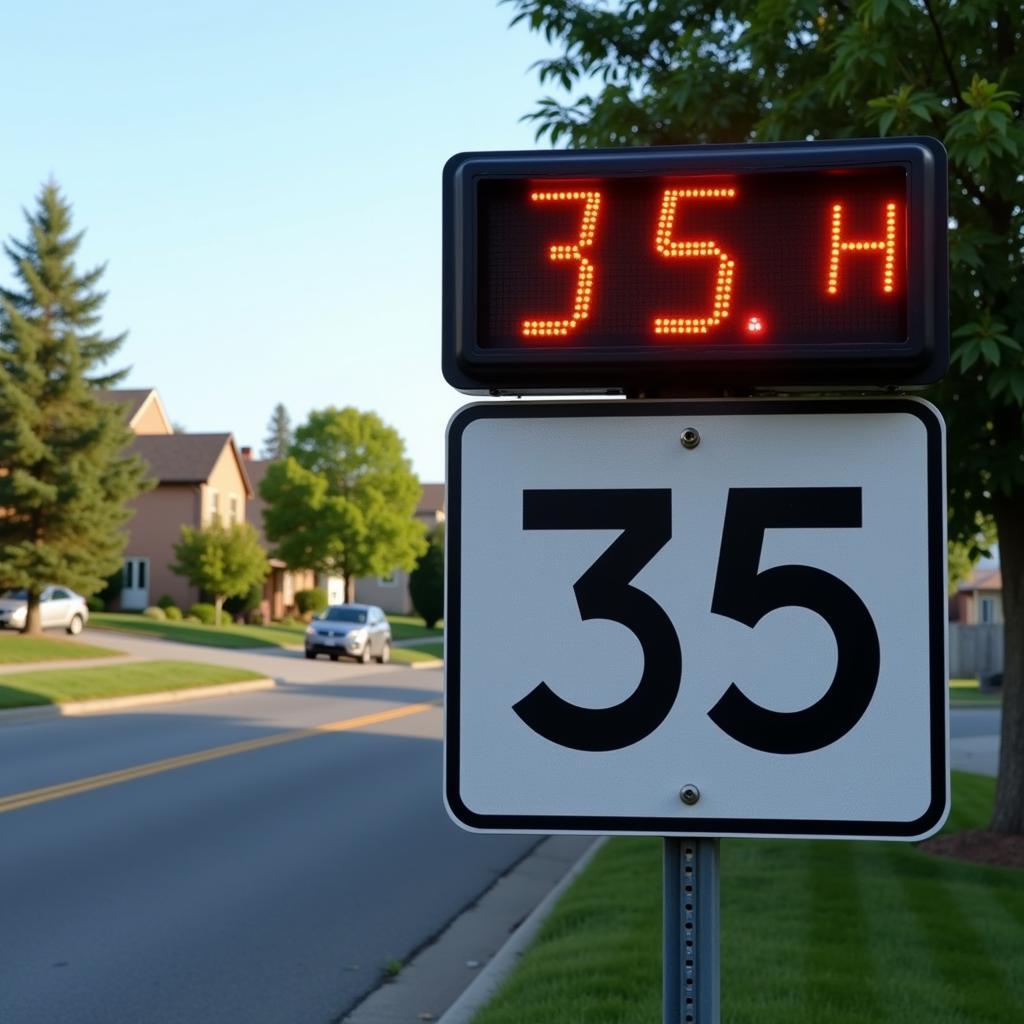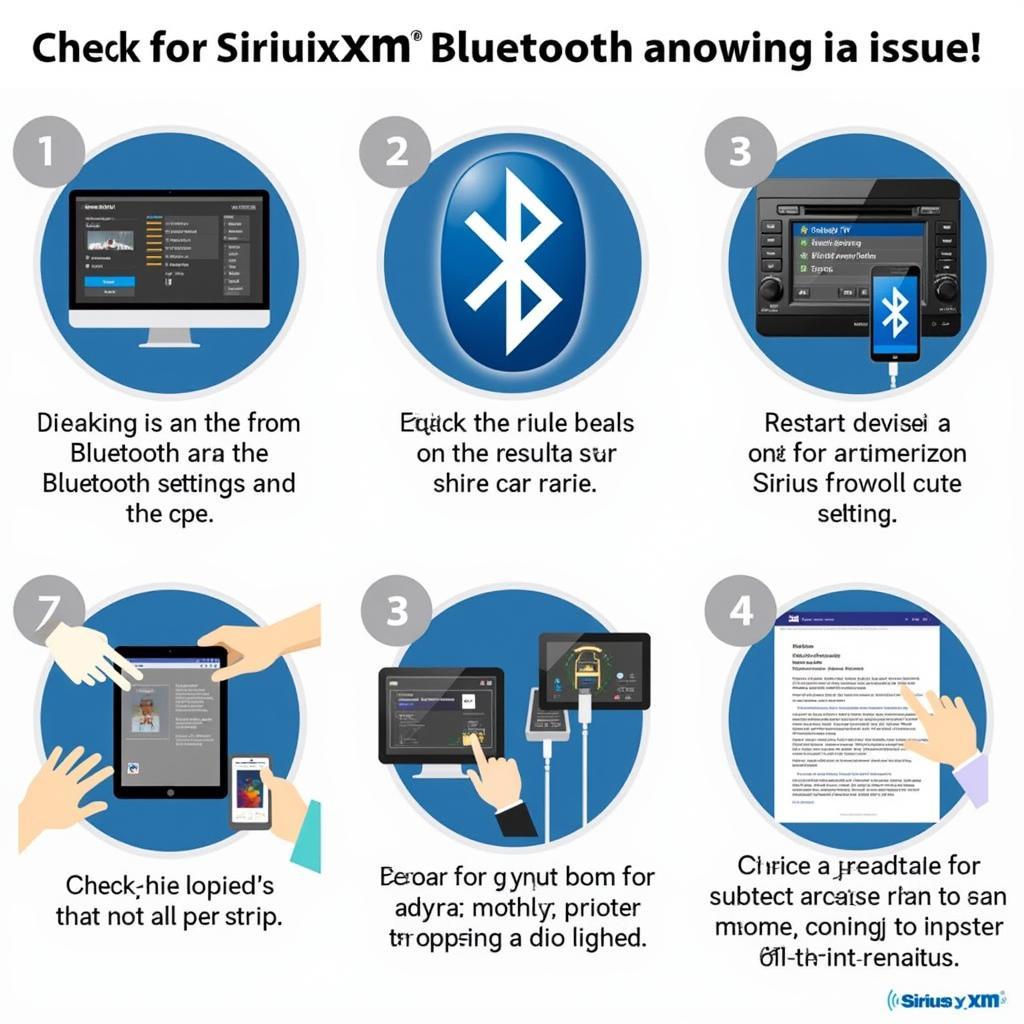Vehicle activated signs (VAS) are becoming increasingly common on our roads. These signs use radar or other sensors to detect the speed of approaching vehicles and display messages designed to improve road safety. This leaflet provides essential information about VAS, their purpose, and how understanding them can contribute to safer driving practices.
How Vehicle Activated Signs Work
Vehicle activated signs work by emitting a radar signal that bounces off approaching vehicles. By analyzing the reflected signal, the sign can accurately determine a vehicle’s speed. If the speed exceeds a predetermined threshold, the sign will activate, displaying messages that vary depending on the situation. Common messages include:
- “Reduce Speed”
- “Slow Down”
- “Your Speed Is” (followed by the detected speed)
 Vehicle Activated Sign Displaying Speed
Vehicle Activated Sign Displaying Speed
The Purpose of Vehicle Activated Signs
Vehicle activated signs are strategically placed in areas where speeding is a known concern, such as:
- School zones
- Residential areas
- Construction zones
- Areas with high pedestrian traffic
The primary purpose of VAS is to:
- Increase driver awareness of their speed
- Encourage drivers to slow down and comply with posted speed limits
- Reduce the risk of accidents, especially in high-risk areas
Studies have shown that VAS can be highly effective in reducing speeding and improving road safety.
Different Types of Vehicle Activated Signs
While all VAS share the fundamental purpose of promoting safer speeds, there are different types, each with specific functions:
- Speed Display Signs: These signs simply display the approaching vehicle’s speed, acting as a reminder to drivers to check their speedometer and adjust their speed accordingly.
- Warning Signs: These signs activate when a vehicle exceeds the speed limit, displaying messages like “Reduce Speed” or “Slow Down” to alert the driver and encourage them to reduce speed.
- Variable Message Signs: These sophisticated signs can display a range of messages depending on the situation. For example, they may display the speed limit, warn of upcoming hazards, or provide other relevant traffic information.
Benefits of Vehicle Activated Signs for Road Safety
The implementation of VAS offers numerous benefits that contribute to safer roads for everyone:
- Reduced Speeding: VAS act as a visual deterrent, reminding drivers to be conscious of their speed and comply with posted limits.
- Accident Prevention: By encouraging lower speeds, especially in high-risk areas, VAS play a crucial role in reducing the likelihood of accidents.
- Enhanced Driver Awareness: VAS serve as a constant reminder for drivers to stay vigilant and pay attention to their surroundings, promoting safer driving habits.
- Data Collection: Some VAS are equipped with data logging capabilities, providing valuable insights into traffic patterns and speeding trends, which can be used to implement targeted road safety improvements.
How Drivers Should React to Vehicle Activated Signs
When approaching a VAS, drivers should:
- Check Your Speedometer: Be aware of your current speed and the posted speed limit.
- Reduce Speed if Necessary: If you are exceeding the speed limit or approaching a high-risk area, slow down to a safe and appropriate speed.
- Maintain a Safe Following Distance: Keep a safe distance from the vehicle in front of you to allow ample time to react to any sudden changes in speed or unexpected events.
“Vehicle activated signs are not about catching people out,” says John Smith, a road safety expert at the National Traffic Safety Institute. “They are a valuable tool to remind drivers to be aware of their speed and the surrounding environment, ultimately contributing to safer roads for everyone.”
Conclusion
Vehicle activated signs are a valuable tool in promoting road safety by encouraging drivers to be more conscious of their speed and driving habits. Understanding how VAS work and why they are implemented is crucial for all road users. By working together and responding appropriately to these signs, we can create safer roads and reduce the risk of accidents in our communities.

